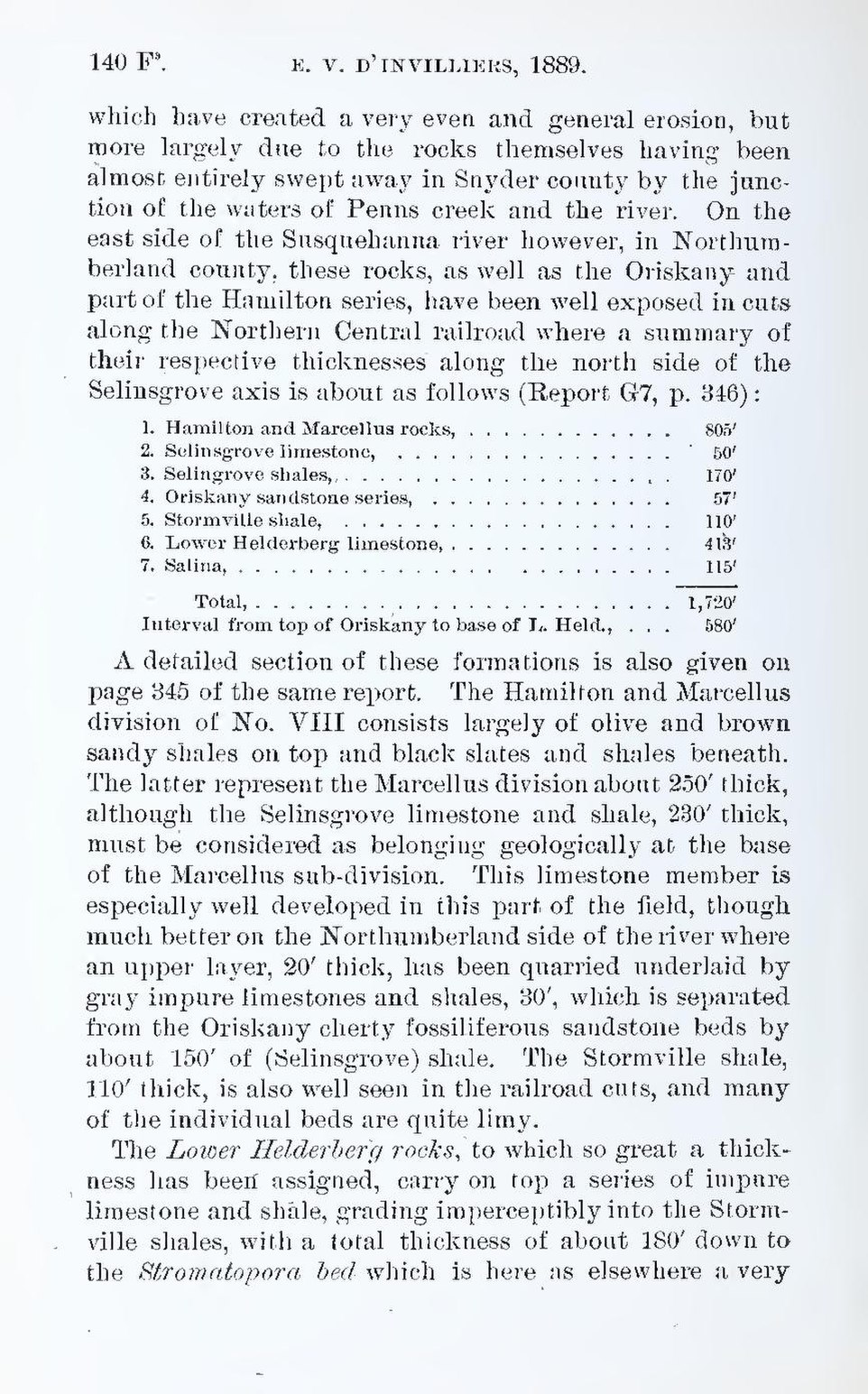which have created a very even and general erosion, but more largely due to the rocks themselves having been almost entirely swept away in Snyder county by the junction of the waters of Penns creek and the river. On the east side of the Susquehanna river however, in Northumberland county, these rocks, as well as the Oriskany and part of the Hamilton series, have been well exposed in cuts along the Northern Central railroad where a summary of their respective thicknesses along the north side of the Selinsgrove axis is about as follows (Report G7, p. 346):
| 1. Hamilton and Marcellus rocks, | 805′ |
| 2. Selinsgrove linestone, | 50′ |
| 3. Selingrove shales, | 170′ |
| 4. Oriskany sandstone series, | 57′ |
| 5. Stormville shale, | 110′ |
| 6. Lower Helderberg limestone, | 413′ |
| 7. Salina, | 115′ |
| Total, | 1,720′ |
| Interval from top of Oriskany to base of L. Held., | 580′ |
A detailed section of these formations is also given on page 345 of the same report. The Hamilton and Marcellus division of No. VIII consists largely of olive and brown sandy shales on top and black slates and shales beneath. The latter represent the Marcellus division about 250′ thick, although the Selinsgrove limestone and shale, 230′ thick, must be considered as belonging geologically at the base of the Marcellus sub-division. This limestone member is especially well developed in this part of the field, though much better on the Northumberland side of the river where an upper layer, 20′ thick, has been quarried underlaid by gray impure limestones and shales, 30′, which is separated from the Oriskany cherty fossiliferous sandstone beds by about 150′ of (Selinsgrove) shale. The Stormville shale, 110′ thick, is also well seen in the railroad cuts, and many of the individual beds are quite limy.
The Lower Helderberg rocks, to which so great a thickness has been assigned, carry on top a series of imupure limestone and shale, grading imperceptibly into the Stormville shales, with a total thickness of about 180′ down to the Stromatopora bed which is here as elsewhere a very
